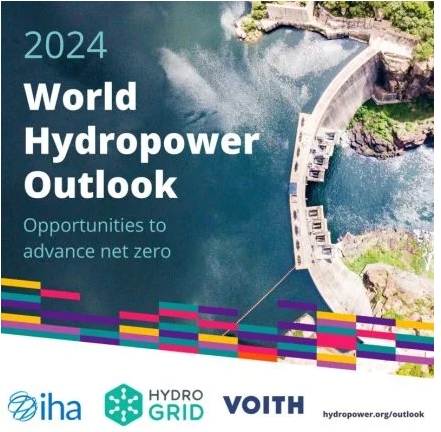Hydropower remains the largest single source of renewable energy, with pumped storage hydropower (PSH) providing more than 90% of the world’s stored energy. However, to meet net zero targets by 2050, hydropower capacity needs to double, necessitating an investment of approximately $3.7 trillion, or $130 billion annually –more than double the current funding levels.
Eddie Rich, CEO of IHA, emphasized the critical role of hydropower in ensuring a reliable energy and water system. “Hydropower is the backbone to a reliable energy and water system. As well as providing electricity, it provides storage, flexibility, reliability to support solar/wind, access to clean water, irrigation, and drought and flood control,” Rich said.
“Whether we like it or not, more droughts and floods due to climate change will mean an increased need to invest in water infrastructure such as dams and reservoirs. Where possible these should be powered.
“This report shows how investments are lagging behind and development has slowed down in the past decade,” Rich continued. “On the positive side, there is a healthier pipeline and pumped storage hydropower is experiencing a renaissance. Its potential to shore up the energy grid is increasingly recognised.”
More hydropower growth needed
The report highlights the need for governments to turn their growing interest in hydropower into actionable projects. To achieve the ‘tripling up’ objective set at COP28, an annual growth rate of 25GW is required until 2030. After that, the rate of hydropower delivery needs to more than double to meet the 2050 net zero target. IHA’s assessment of the “big 100” pipeline of projects suggests that this acceleration is achievable in the early years of the next decade, but sustained action is necessary.
Malcolm Turnbull, IHA President, pointed out the necessity for long-term planning and investment in hydropower to balance the intermittent nature of solar and wind power. ” The more variable power that is developed through solar and wind, the more hydropower will be required to provide balance and flexibility when the wind doesn’t blow, and the sun doesn’t shine,” Turnbull stated. “Governments need to plan for long term energy needs, including a balanced mix of renewable energy, for both generation and long duration storage. Investors need long term certainty for their investment given the high initial capital costs of building large infrastructure projects. Moore’s Law does not apply to digging holes. Hydro projects take time, more than it takes to build solar farms, and so we need to move much faster to deliver the hydropower we need.”
Installed hydropower capacity
In 2023, China, Brazil, the US, Canada, and Russia were the top countries for installed hydropower capacity, with China alone accounting for nearly half of the new capacity. Europe is focusing on modernizing existing hydropower facilities and developing pumped storage to meet its 2030 renewable energy targets. In Africa, hydropower already provides 40% of sub-Saharan Africa’s electricity, though 90% of its potential remains untapped. South America relies on hydropower for 45% of its electricity, with over 13GW of new projects in the pipeline. In Central America, hydropower accounts for over 30% of electricity, and the US has significant potential for modernization, with about half of its non-federal hydropower fleet up for relicensing by 2035.
The IHA’s report underscores the importance of hydropower in achieving global renewable energy goals and the urgent need for increased investment and faster project delivery. The findings call for coordinated efforts from governments and investors to ensure hydropower can meet the growing demands of a decarbonizing world.
